How to Travel Through Poland
Poland offers excellent transportation infrastructure connecting its diverse regions and attractions. From the historic streets of Kraków to the Baltic coast of Gdańsk, from the business hub of Warsaw to the cultural richness of Wrocław, the country provides multiple convenient and affordable ways to explore its cities and countryside. Whether you prefer the comfort of modern trains, the affordability of buses, the flexibility of ride-sharing, or the independence of driving, Poland's transportation network makes it easy to discover this fascinating Central European nation.
Table of Contents
Transportation in Poland Overview
Poland's transportation network has undergone significant modernization over the past two decades, creating an efficient and comprehensive system for both domestic and international travel. The country's central location in Europe makes it an excellent base for exploring the region, while its internal transport links connect major cities and tourist destinations seamlessly.
The railway system, operated primarily by PKP (Polish State Railways), offers comfortable intercity connections between major urban centers. Modern rolling stock and improved infrastructure have made train travel increasingly popular for both business and leisure travelers seeking reliability and comfort.
Bus networks, including international operators like FlixBus, provide extensive coverage at budget-friendly prices, reaching destinations that trains might not serve directly. The road infrastructure includes modern highways and expressways, though some sections require toll payments.
Urban transportation in Polish cities combines traditional public transport with modern ride-sharing services. Cities like Warsaw, Kraków, Wrocław, and Gdańsk offer comprehensive public transport systems complemented by bike-sharing programs and ride-hailing apps like Uber and Bolt.
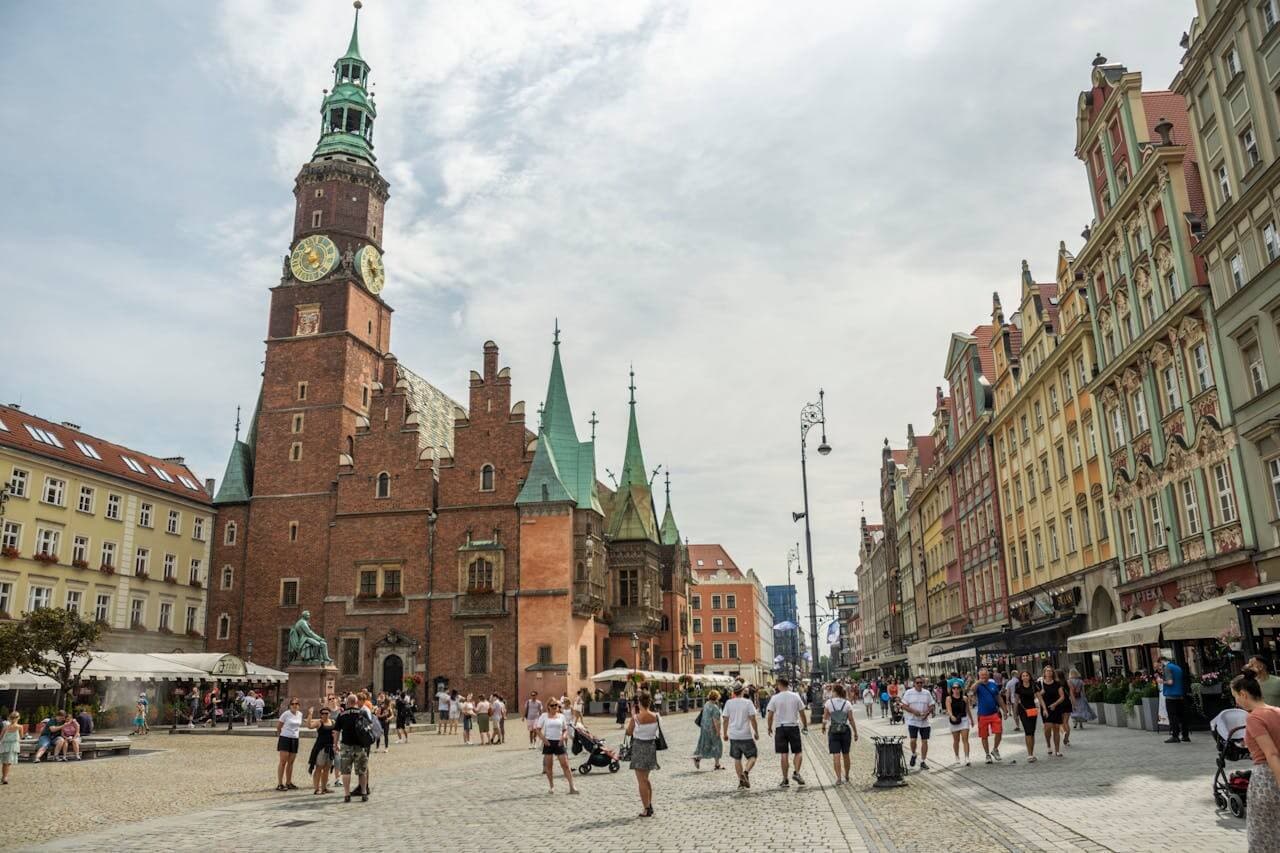
Transportation Options
Poland offers diverse transportation options to suit different budgets, timeframes, and travel preferences. Each mode has distinct advantages depending on your specific needs.
Advantages
- Comfortable seating
- City center to city center
- No traffic delays
- Scenic routes
Disadvantages
- Limited night services
- Can be expensive for long distances
- Some routes infrequent
Best For
Long-distance travel between major cities
Booking Tip
Book online at pkp.pl for discounts and seat reservations
Advantages
- Very affordable
- Extensive network
- Free WiFi
- International routes
Disadvantages
- Longer travel times
- Traffic dependent
- Less legroom
- Limited luggage
Best For
Budget travel and international connections
Booking Tip
Book early for best prices, mobile tickets available
Advantages
- Very affordable
- Flexible timing
- Meet locals
- Door-to-door service
Disadvantages
- Depends on driver availability
- Less predictable
- Safety considerations
- Limited luggage
Best For
Budget-conscious travelers seeking flexibility
Booking Tip
Check driver ratings and reviews, book in advance for popular routes
Advantages
- Convenient booking
- Cashless payment
- Real-time tracking
- Multiple vehicle types
Disadvantages
- Surge pricing
- Limited to major cities
- More expensive than public transport
Best For
Urban transportation and airport transfers
Booking Tip
Compare prices between Uber and Bolt, avoid peak hours for better rates
Advantages
- Available everywhere
- Professional drivers
- Regulated pricing
- Cash accepted
Disadvantages
- More expensive than ride-sharing
- Language barriers
- Potential overcharging
Best For
Areas without ride-sharing, when apps don't work
Booking Tip
Use licensed taxis, agree on price for longer trips, keep receipts
Driving in Poland
Driving in Poland offers flexibility and convenience, especially for exploring rural areas and smaller towns. However, it's important to understand local traffic rules, speed limits, and toll road requirements.
- Built-up areas: 50 km/h (31 mph)
- Outside built-up areas: 90 km/h (56 mph)
- Expressways (droga ekspresowa): 120 km/h (75 mph)
- Highways (autostrada): 140 km/h (87 mph)
- Night speed limit in cities: 60 km/h (37 mph) between 23:00-05:00
- A1 Highway: Gdańsk-Łódź section (approximately 470 km)
- A2 Highway: Konin-Stryków section (approximately 250 km)
- A4 Highway: Kraków-Katowice section (approximately 60 km)
- Toll rates: 0.10-0.40 PLN per km depending on vehicle type
- Payment methods: Cash, cards, electronic toll collection (e-TOLL)
- Valid driving license (EU license accepted)
- Vehicle registration documents
- Valid insurance (minimum third-party)
- Headlights on at all times (day and night)
- First aid kit, warning triangle, fire extinguisher required
- Paid parking zones in city centers (usually 8:00-18:00)
- Blue zones: short-term parking with parking disc
- Zero tolerance for drink driving (0.02% BAC limit)
- Mobile phone use only with hands-free devices
- Winter tires recommended (November-March)
Important Driving Notes
- • If traveling by car, some highways are toll roads (autostrady płatne)
- • Electronic toll collection (e-TOLL) system is available for frequent users
- • GPS navigation recommended for toll road planning and route optimization
- • Fuel prices are generally lower than Western European countries
- • Parking in city centers can be challenging and expensive
- • Consider public transportation for urban areas to avoid parking hassles
Popular Routes & Travel Times
Here are the most popular travel routes in Poland with estimated times and costs for different transportation methods.
Train (PKP)
2h 30min (Express), 50-150 PLN
Bus (FlixBus)
4-5 hours, 25-60 PLN
Car (Driving)
3 hours, tolls: ~25 PLN
Rideshare
3-4 hours, 30-50 PLN
Train (PKP)
3 hours (Express), 60-180 PLN
Bus (FlixBus)
5-6 hours, 30-70 PLN
Car (Driving)
3.5 hours, tolls: ~35 PLN
Rideshare
4-5 hours, 40-60 PLN
Train (PKP)
3.5 hours, 45-120 PLN
Bus (FlixBus)
4-5 hours, 25-55 PLN
Car (Driving)
3 hours, tolls: ~15 PLN
Rideshare
3-4 hours, 35-50 PLN
Train (PKP)
4 hours, 55-140 PLN
Bus (FlixBus)
5-6 hours, 30-65 PLN
Car (Driving)
3.5 hours, tolls: ~30 PLN
Rideshare
4-5 hours, 40-55 PLN
Note: Prices and times are approximate and can vary based on season, demand, and booking time. Toll costs are additional for car travel on certain routes.
City Transportation
Major Polish cities offer comprehensive public transportation systems, complemented by modern ride-sharing services and bike-sharing programs.
Available Options
Local Tips
ZTM app for tickets, metro runs until midnight, night buses available
Available Options
Local Tips
Historic center is car-free, trams connect to suburbs, mobile tickets available
Available Options
Local Tips
Extensive tram network, mobile app for tickets, bike-friendly city
Available Options
Local Tips
SKM connects Tri-City area, historic center walkable, ferry connections
Urban Transportation Tips
- • Download city transport apps for mobile tickets and real-time information
- • Uber and Bolt are available in all major cities with competitive pricing
- • Traditional taxis are regulated but may be more expensive than ride-sharing
- • City bike systems are expanding rapidly and offer affordable short-term rentals
- • Historic city centers are often pedestrian-friendly with limited car access
Essential Polish Transportation Vocabulary
Understanding basic Polish transportation vocabulary will make traveling around Poland much easier. Whether you're using trains, buses, taxis, or public transport, these terms appear frequently in announcements, signs, and conversations.
| Polish | English | Category |
|---|---|---|
| Dworzec | Train station | Train |
| Peron | Platform | Train |
| Pociąg | Train | Train |
| Opóźniony | Delayed | Train |
| Bilet miejscowy | Standing ticket | Train |
| Autobus | Bus | Public Transport |
| Tramwaj | Tram | Public Transport |
| Przystanek | Stop | Public Transport |
| Bilet | Ticket | Public Transport |
| Kasować bilet | Validate ticket | Public Transport |
| Taksówka | Taxi | General |
| Lotnisko | Airport | General |
| Centrum | City center | General |
| Ile kosztuje? | How much? | Phrases |
| Czy można kartą? | Can I pay by card? | Phrases |
Practical Travel Tips
Night transport limited: Most Polish cities have very limited night buses/trams after midnight. Plan your evening accordingly or budget for taxis.
Weekend schedule changes: Public transport runs less frequently on weekends, especially Sundays. Check apps for updated schedules before traveling.
Ticket inspectors are strict: Polish transport police ("kontrola biletów") give hefty fines (100-200 PLN) with no warnings. Always have a valid ticket ready to show.
Best Apps for Getting Around Poland
Modern mobile applications have revolutionized public transportation in Poland, providing real-time information, digital ticketing, and route planning capabilities. These essential apps integrate with Poland's transportation network to offer live updates, delay notifications, and seamless payment options across major Polish cities including Warsaw, Kraków, Wrocław, and Gdańsk.
Jakdojade
Public Transport Navigation
Every local uses this app! Works in over 100 Polish cities and shows you exactly when your bus or tram is coming. Game-changer for public transport.
CzyNaCzas.pl
Transport Delays & Schedule
Saves you from waiting on cold platforms and bus stops! Check if your train, tram, or bus is actually on time before leaving your hotel. Polish public transport can be unpredictable.
19115 (Warsaw)
Warsaw Public Transport
Must-have for Warsaw! Buy tickets right on your phone and never worry about having exact change. The ticket inspectors accept mobile tickets.
Google Maps
Navigation & Transit
Excellent for walking directions and public transport integration. Works well in major Polish cities with real-time transit data.
PKP Intercity
Train Booking & Tickets
Official PKP app for booking train tickets, checking schedules, and managing reservations. Mobile tickets available.
Uber
Ride-hailing Service
Most popular ride-hailing app in major Polish cities. Quick, cashless rides with upfront pricing and real-time tracking.
App Download Tips
Polish transport zones: Unlike other countries, Polish cities use zone-based pricing. A single ticket might not cover your entire journey if you cross zones - check the app before traveling.
No cash on buses: Most Polish buses don't accept cash anymore - you MUST have a mobile ticket, card payment, or pre-bought paper ticket. Don't get caught without one!
Train seat reservations: Unlike Western Europe, Polish trains often sell tickets without guaranteed seats. Book early or you might stand for hours on popular routes like Warsaw-Kraków.
Must-Visit Polish Cities for Travelers
Poland offers incredible diversity from medieval towns to modern metropolises. Each city has its own unique character, history, and attractions that make Poland a fascinating destination for travelers.
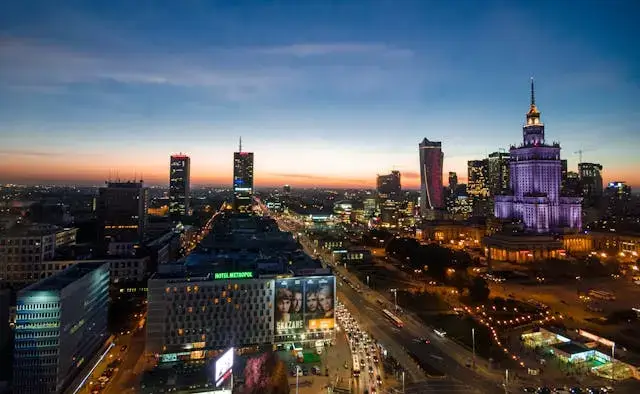
Warsaw
Poland's dynamic capital with a reconstructed Old Town, Royal Castle, and vibrant modern culture.
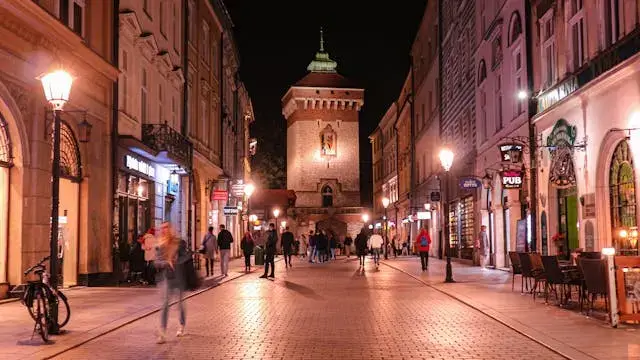
Krakow
Poland's former royal capital with stunning medieval architecture and rich cultural heritage.
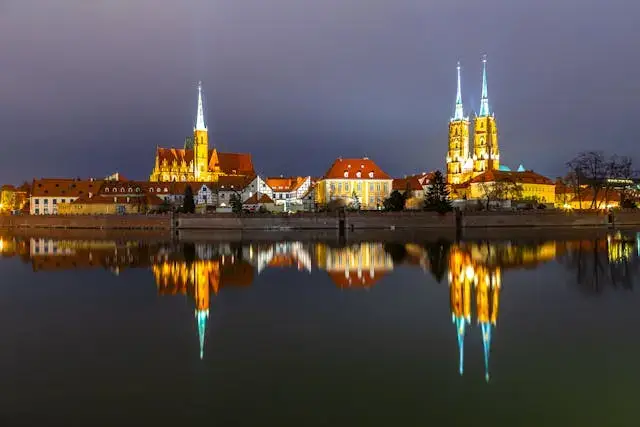
Wroclaw
Beautiful city built on 12 islands with stunning architecture and the famous Dwarfs Trail.
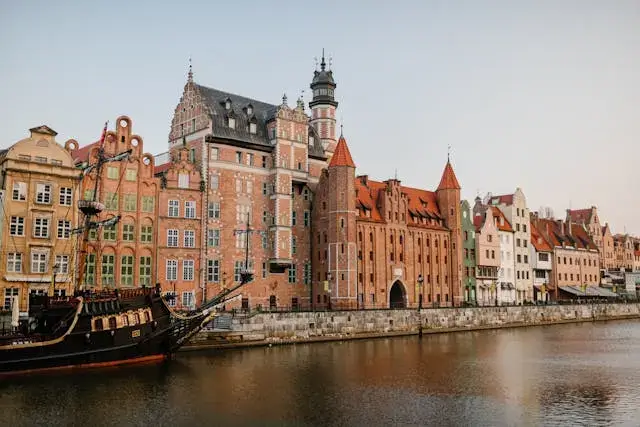
Gdansk
Historic Hanseatic port city with maritime heritage and beautiful Baltic coastline.
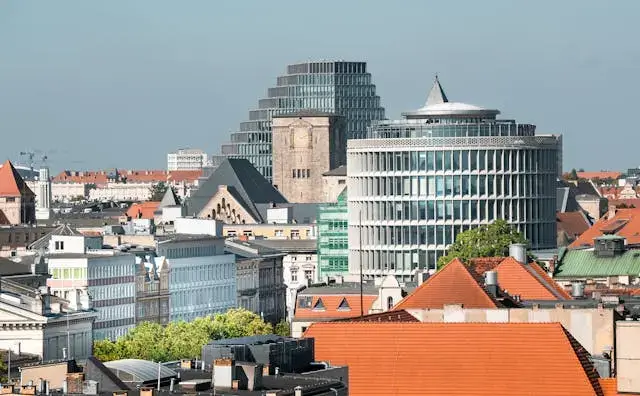
Poznan
Dynamic city known for international trade fairs and beautiful Renaissance architecture.

Lublin
Charming city in eastern Poland with rich history and beautiful Old Town architecture.
Frequently Asked Questions
What's the best way to travel between Polish cities?▼
For major cities, trains (PKP) offer the best balance of comfort, speed, and convenience. For budget travel, FlixBus is excellent. BlaBlaCar provides a middle ground with flexibility. For groups or specific destinations, renting a car might be most economical.
Do I need to pay tolls on Polish highways?▼
Yes, some highways (autostrady) are toll roads, including sections of A1 (Gdańsk-Łódź), A2 (Konin-Stryków), and A4 (Kraków-Katowice). Toll rates range from 0.10-0.40 PLN per kilometer. You can pay with cash, cards, or use the e-TOLL electronic system.
What are the speed limits in Poland?▼
Speed limits are: 50 km/h in built-up areas (60 km/h at night), 90 km/h outside built-up areas, 120 km/h on expressways, and 140 km/h on highways. Speed cameras are common, and fines can be substantial.
Are Uber and Bolt available throughout Poland?▼
Uber and Bolt operate in major cities including Warsaw, Kraków, Wrocław, Gdańsk, Poznań, and others. They're not available in smaller towns and rural areas, where traditional taxis are the main option for on-demand transportation.
How reliable is public transportation in Polish cities?▼
Public transportation in major Polish cities is generally reliable and punctual. Most cities have modern fleets, real-time tracking apps, and extensive networks. Warsaw has a metro system, while other cities rely primarily on trams and buses.
Can I use my foreign driving license in Poland?▼
EU driving licenses are valid in Poland. Non-EU licenses may be used for short-term visits (usually up to 90 days) but check specific requirements. International Driving Permits are recommended for non-EU visitors. For longer stays, you may need to exchange your license for a Polish one.
What's the best app for booking transportation in Poland?▼
For trains: PKP Intercity app or pkp.pl website. For buses: FlixBus app. For ridesharing: BlaBlaCar app. For city rides: Uber and Bolt apps. For public transport: each city has its own app (e.g., ZTM Warsaw, MPK Kraków). Google Maps integrates well with Polish transportation options.
Ready to Explore Poland?
With excellent transportation connections and diverse travel options, Poland is easy to explore whether you're visiting for business or pleasure. Start planning your journey and discover the beauty and culture of this remarkable country.